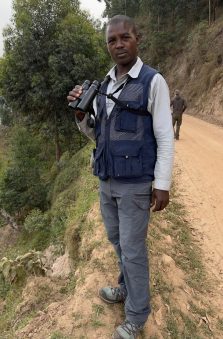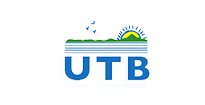Kenya important bird areas
Important Birding Areas in Kenya
Kenya is home to some of the most diverse birdlife in the world. Its landscapes, from coastal wetlands to the highlands, provide unique habitats for a wide variety of birds. In this section, we explore Kenya's Important Birding Areas (IBAs) and their significance for bird conservation and tourism.
Kenya boasts over 1,000 bird species, including globally threatened and endemic species. Its IBAs are critical habitats that protect these bird populations and offer birdwatchers a chance to observe them in their natural environments.
What are Important Birding Areas (IBAs)?
IBAs are sites that are crucial for the conservation of bird species. These areas support large populations of birds or provide essential habitats for species at risk of extinction. Kenya has several IBAs, which are protected due to their ecological importance for both local and migratory birds.
Aberdare Mountains National Park
Over 200 species have been recorded, including African Cuckoo-hawk, Mountain Buzzard Jackson’s Spurfawl, Moorland Francolin and Hartlaub’s Turaco is found on the high peaks, foraging largely on lobelias, while other montane sunbirds (including tacazze Sunbird, Nothern Double-collard Sunbrd, Malachite Sunbird and Eastern Double-collard Sunbird) are common at slightly lower altitudes. Sharp’s Longclaw and Jackson’s Widdowbird is an uncommon resident of the southern slope grasslands of kinangop grasslands. The restricted-range aberdare Cisticola occurs locally in the tussock moorland, with densities of around 3.2 birds/ha in suitable habitat; more than 20,000 pairs are estimated to occur. Regionally threatened species known from this site include Olive Ibis (few records), Aryre’s Hawk-eagle(scarce), Crowned Eagle (low density), Stripped Flufftail (rarely recorded) and a few more.
Other non-bird biodiversity includes; Lions, Leopards, primates like the Black and White Colobus, Sykes Monkey, and the rare Golden Cat and Bongo Antelopes in the Bamboo Zones of this Region.
Kakamega Forest
The site is a mid-altitude tropical rainforest, and it is the easternmost outlier of the Congo Basin forests. Its West African affinities are unique in Kenya, and the forest contains many species found nowhere else in the country making it one among special destinations in the country. The forest lies in the Lake Victoria catchment, about 40 km north of Kisumu, and just east of the Nandi Escarpment that forms the edge of the central highlands. It was first gazetted as Trust Forest in 1933, it is seated on an estimate of 10,000 ha.
This forest’s avifauna is well known, rich, and unusual in its way. Two globally threatened species occur. i.e. Chapin’s Flycatcher (scarce resident) and turners Eremomela (reasonably common). The approximate of 194 forest-dependent bird species (the highest total for any Kenyan forest) include many of Kenya’s Guinea–Congo Forests biome species, as well as 33 of Kenya’s 70 Afrotropical Highlands biome species.
Other non-bird wildlife occur are most of them are west Africa mammals for example a rare Giant Ottar Shrew, at least 28 different species of Snakes including the rare Goldie’s Tree Cobra and the Thirteen-scaled Green Snake plus other mammals in this community which strongly shows affinities of Congo Basin
Mount Kenya and Castle Forest
Mount Kenya lies c.140 km north-north-east of Nairobi, with its northern flanks across the equator. The mountain’s sprawling slopes are cloaked in forest, bamboo, scrub and moorland, giving way on the high central peaks to rock, ice and snow. Mount Kenya is an extremely important water catchment area, supplying the Tana and Northern Ewaso Ngiro systems.
Mount Kenya has a rich montane bird fauna. It is undoubtedly a stronghold for the threatened and little-known Abbott’s Starling, even though there are few recent records (probably due to its nomadic nature whilst in search of fruiting trees). Lesser Kestrel is a passage migrant on the moorland. Jackson’s Widowbird can be found in grassland up to 3,000 m, and other more forest species are common here. Other birds to expect here; Silvery-cheeked Hornbill, Hartlaub’s Turaco, Rueppell’s Robin-Chat, Mountain Yellow Warbler, and Yellow-crowned Canary. The lodge’s waterhole attracts many mammals including African Buffalo. We’ll spend the early mornings searching for White-starred Robin, Abyssinian Crimson-wing, African Crowned Eagle, African Emerald Cuckoo, and Moustached Green Tinkerbird. A shaded riverside trail may reveal Crowned Hornbill, Mountain Wagtail, and up to eight species of sunbirds, including the stunning Tacazze Sunbird.
Taita Hills Forest and Ngagao Forest
The Taita Hills lie in south-eastern Kenya, south and west of Voi town, and rise abruptly above the semi-arid plains of Tsavo West National.
These plains, at 600–700 msl, isolate the hills from other mountains and highland blocks. The closest of these are the Chyulu Hills and North Pares, at 70 km away, and Mount Kilimanjaro, at 80 km away. The West Usambara mountains, with which the Taita Hills share some botanical affinities, are at 120 km distant. The Taita Hills are also treated as part of the Tanzania–Malawi mountains Endemic Bird Area.
The Taita Hills Important Bird Area is made up of three main massifs, each with small fragments of indigenous forest. These forests are surrounded by settlements and agriculture, and the land around them is not suitable for forest-dependent birds. However, some species, including the two endemics, are able to move between the forest patches and these are only Taita Apalis and Taita Thrush
Dakatcha Woodlands
Lying three degrees south of the equator and north of the Sabaki River Mouth in Kilifi County, Magarini Sub County, is an extensive tract of relatively intact coastal woodland, the Dakatcha Woodland Important Bird Area (IBA) and Key Biodiversity Area (KBA). The landscape consists of undulating hills, with a series of dry forests, dense thickets and open woodlands dominated by spreading Brachystegia spiciformis trees locally known as Mrihi, and mingled with active and abandoned farmlands.
It is home to globally threatened flora and fauna such as the Clarke’s Weaver, Golden-rumped Sengi, Sokoke Pipit, and Sokoke Scops Owl among others and performs invaluable ecosystem services for the surrounding community.
The woodland plays a key part in storing rainwater, preventing soil erosion, sequestering carbon and even regulating the local climate.
Arabuko Sokoke Forest
More than 230 bird species have been recorded in Arabuko Sokoke Forest Reserve. The area is well known for several globally threatened species, including the Sokoke scops owl and Clarke’s weaver. Other sought-after species that can be seen here include the Sokoke pipit, Amani sunbird and chestnut-fronted helmet-shrike. As always, forests don’t offer easy bird watching, but the rewards of interesting species are plentiful here. Even non-birders will enjoy some of the more noticeable forest birds, including the trumpeter and silvery-cheeked hornbill. What to expect here Crested Guineafowl, Narina Trogon, Green Barbet, Mombasa Woodpecker, Fischer’s Greenbul, Yellow-bellied and Tiny Greenbuls, Violet-backed Starling, Forest Batis, Black-headed Apalis, East-coast Akalat, Eastern Bearded Scrub-Robin, Black-headed Apalis, Northern Brownbul, Terrestrial Brownbul, Pale Batis, Eastern Nicator, Red-tailed Ant-Thrush, Chestnut-fronted Helmet-shrike, Plain-backed Sunbird, Amani Sunbird, Bohm’s Spinetail, Moustached Green Tinkerbird, Sokoke Pipit, Trumpeter Hornbill, Mouse-coloured Sunbird, Scaly Babbler, Southern Banded Snake-Eagle, African Crowned Eagle, Little Yellow Flycatcher, Blue-mantled Crested-Flycatcher, Four-coloured Bush-shrike, Black-bellied Starling,Lizard Buzzard, Malindi Pipit, Gull-billed, Saunders’s Terns, Sooty Gull, Grey Plover, Crab Plover, Bat-Hawk Osprey, Western Reef Heron, Lesser Sandplover, Greater Sandplover, Sanderling, Whimbrel, Eurasian Curlew, Terek Sandpiper, Ruddy Turnstone, Lesser Crested Tern, Northern Carmine Bee-eater, Yellow-throated Longclaw, Zanzibar Sombre Greenbul, Little Yellow Flycatcher African Open-billed Stork, African Spoonbill, Pied Avocet alongside more other species.
Mida Creek
This area comprises a complex of marine and tidal habitats on Kenya’s north coast, stretching from just south of Malindi town southwards to beyond the entrance to Mida Creek.
Habitats include inter-tidal rock, sand and mud; fringing reefs and coral gardens; beds of seagrass; coral cliffs, platforms and islets; sandy beaches; and mangrove forests. Some birds here; Collared Palm-Thrush Crab-Plover, Purple-banded Sunbird, Pied Kingfisher, Whimbrel, Terek Sandpiper among others
Tsavo National Park
What to expect here Cut-throat Finch, Golden-breasted Starling, African Bare-eyed Thrush, Irania, Quail-plover, Pangani Longclaw, Abyssinian Scimitarbill, Violet Wood-hoopoe, Southern Ground Hornbill, Spotted Eagle-Owl, Long-crested Eagle, Square-tailed Nightjar, Somali Long-billed Crombec, the Eastern Paradise, Steel-blue, and Straw-tailed Whydahs, Scaly Chatterer, Spotted Eagle-Owl, Spotted Flycatcher, Vulturine Guinea-Fowl, Crested Francolin, Red-chested Cuckoo, Black-cuckoo Shrike, Eurasian and Black-headed Orioles, Gabar Goshawk, Three-streaked Tchagra, Eastern Violet-backed, and Variable Sunbirds, Red-fronted Warbler, Green-winged Pytilia, white-headed and Blue-napped Mousebirds, Sulphur-breasted Bush Shrike, Red-billed and Yellow-billed Oxpeckers, Black-fronted Bush Shrike, Yellow-throated Woodland Warbler, Yellow-bellied and Striped-cheeked Greenbuls, White-starred Robin, the national Taita Thrush, Taita white-Eye, Taita Apalis, Ayres’s Hawk-Eagle, Tawny, Steppe, Imperial, Martial and Wahlberg’s Eagles, Egyptian Vulture, Bateleur, Black-shouldered Kite, Barbary Falcon, the Grey and Common Kestrels, Red-winged Lark, Somali and Temminck’s Coursers, Crested Francolin, white-bellied and Buff-crested Bustard, Somali Ostrich, Olive-Tree Warbler, Red-billed Buffalo Weaver, Northern Pintail, Red-billed Teal, Fulvous Whistling and White-faced whistling Ducks, Common Sandpiper, Collared Pratincole, and many others
Amboseli National Park
What to Expect here; Taveta Golden Weaver, Long-toed Plover, Red-throated Tit, Collared Pratincole, Fischer’s Sparrowlark, Black-necked Weaver, Fischer’s Starling, Greater Spotted Eagle, Caspian Plover, Yellow-throated Sandgrouse, Black-faced Sandgrouse, Capped Wheatear, Lead-coloured Flycatcher, the skulking Aberdare Cisticola, Golden-winged Sunbird as well as Eastern Double-collared, Tacazze and Malachite Sunbirds, Scarlet-tufted Malachite Sunbird, Alpine Chat, Rufous-breasted Sparrowhawk, Dusky Turtle Dove, Scarce Swift, Cape Wagtail, Cape Robin-Chat, Abyssinian Ground Thrush, Chiffchaff, Hunter’s Cisticola, Mountain Yellow Warbler, Slender-billed Starling and Kandt’s Waxbill, and many more of the 450 species known to occur here
Nairobi National Park
An amazing wildlife and game at the center of Kenya’s Capital-Nairobi! The park is fenced to protect wildlife from direct contact to human.
Whereas the southern boundary is open to allow migrating wildlife move between the park and the neighboring Kitengela plains. From big ungulates to the smallest like rodents and chameleons, checklists of over 500species of birds live in the park. Birds here; Von der Decken’s Hornbill, Common Ostrich, Black-headed Heron, Marabou Stork, Egyptian Goose, Black-shouldered Kite, African White-backed Vulture, Augur Buzzard, Tawny Eagle, Helmeted Guineafowl, the beautiful Grey Crowned Crane, White-bellied Bustard, Ring-necked Dove, White-browed Coucal, Rufous-naped Lark, Red-rumped Swallow, Rock Martin and the multicolored Red-and-yellow Barbet, or our first flamingos among many wintering Palearctic shorebirds on Lake Magadi
Samburu, Shaba and Buffalo Springs
White-headed and Blue-napped Mousebirds, Sulphur-breasted Bush Shrike, Red-billed and Yellow-billed Oxpeckers, Black-fronted Bush Shrike, Yellow-throated Woodland Warbler, Yellow-bellied and Striped-cheeked Greenbuls, White-starred Robin, the national Taita Thrush, Taita white-Eye, Taita Apalis, Ayres’s Hawk-Eagle, Tawny, Steppe, Imperial, Martial and Wahlberg’s Eagles, Egyptian Vulture, Bateleur, Black-shouldered Kite, Barbary Falcon, the Grey and Common Kestrels, Red-winged Lark, Somali and Temminck’s Coursers, Crested Francolin, white-bellied and Buff-crested Bustard, Somali Ostrich, Olive-Tree Warbler, Red-billed Buffalo Weaver, Northern Pintail, Red-billed Teal, Fulvous Whistling and White-faced whistling Ducks, Common Sandpiper, Collared Pratincole and other non-bird biodiversity – remember the Northern Special Four
Lake Baringo National Park
Lake baringo areas are rich in arid-zone birds, where we search for Hunter’s Sunbird, Heuglin’s Courser, Lichtenstein’s Sandgrouse, and Northern White-faced Scops-Owl. At dusk, good to see Slender-tailed Nightjars gliding along the hippo-covered shore.other birds like Fan-tailed Raven, Hemprich’s Hornbill, Mocking Cliff-Chat, and Bristle-crowned Starling.
Explore the Kerio Valley, where we search rocky, scrubby hillsides for Green- backed Eremomela, Chestnut-crowned Sparrow-Weaver, Brown Parrot, White-crested Turaco, Pearl-spotted Owlet, and Black-headed Gonolek.
Masaai Mara National Reserve
The northern portion of the magnificent Serengeti system, offers spectacular vistas over flat-topped acacia and grassy plains riddled with ungulates and other animals. East Africa’s famous Lions, Leopards, Cheetahs, African Elephants, gazelles, and other wildlife live here. However, birding does not take a back seat, and you should be rewarded with views of many large raptors and vultures that gather at the kills, as well as storks, Kori Bustard, Southern Ground-Hornbill, and other species that suffer from disturbance outside these large protected areas. Other highlights may include Rufous-bellied Heron, Saddle-billed Stork, Temminck’s Courser, Sooty Chat, and Schalow’s Turaco Among others
We're thrilled to have this amazing testimonial from Mr Jonathan and Bennett Nikkila (United States), who just returned from their unforgettable Uganda and Rwanda birding adventure with one of our most regarded bird guides, "Davis"
WIDE BIRDING ECO TOURS
The Unflappable Team
Birding Tours in Africa: Our team of highly skilled safari specialists serves as our local tour guides based throughout the East African region. We work with well-trained and experienced guides who are not only authentic and professional but also bring a passionate touch to your safari.
© 2025 Wide Birding Eco Tours. All Rights Reserved | Brand By Robylinks Solutions











